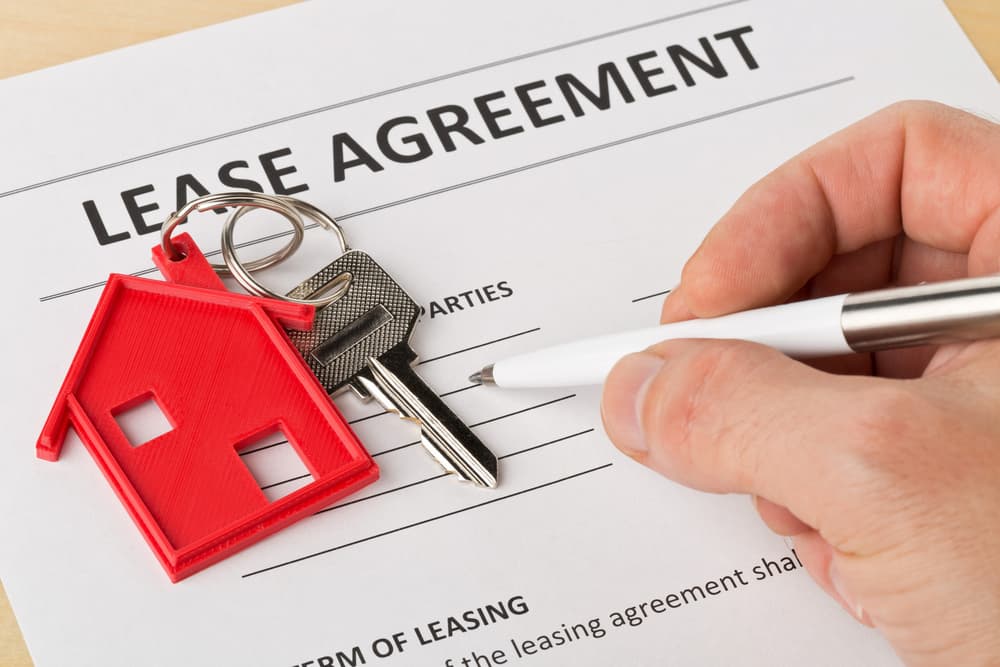
Buying a home is a big step in more ways than one and a massive personal and financial commitment. If you aren’t quite ready to be a homeowner, there are a few other options to keep in mind: renting an apartment, a condo, or even leasing a house.
And although renting an apartment is very common, leasing a house could be a far better choice for you.
What is Leasing a House?
“Leasing” is another word for renting, so leasing a home means that you are renting it. You do not own the property, but your monthly rent payment entitles you to live there, ensures tenant rights, and gives you access to any amenities agreed upon in the lease agreement.
A lease agreement is a clearly defined legal contract between a tenant (renter) and a landlord or property management company. The contract will outline various terms and conditions involved in renting the home. The purpose of the lease agreement is to protect both the renter and the landlord.
Can You Lease a House for More/or Less Than a Year?
Usually, a lease will be 12 months long. Depending on the landlord, you may also have the option of a shorter or longer lease and a month-to-month agreement.
Pros and Cons of Apartments vs. Houses
Weighing your options between house leasing vs. renting an apartment? Each offers its own advantages and drawbacks, and understanding these can help you make the right choice.
Here are some crucial differences between renting a house and an apartment.
Space
The amount of living space you have will almost always be more significant in a house vs. an apartment, simply because the square footage is usually larger. You may even have additional space in a home that includes an outdoor living area, garage, basement, or attic. The common living spaces, such as the kitchen, bathrooms, and bedrooms, will often be larger, too.
If you are searching for a place to rent for a family, the extra space in a home makes it an ideal option. Or, you may want more room, and a house can provide that.
For example, The Oaks at Suncreek Estates features homes between 2,400 and 2,700 square feet – you would have a hard time finding a Houston apartment that even comes close to that.
Proximity to Other People
Most apartments are situated in large buildings with multiple units and two or more stories. As a result, you’ll live in close proximity to other people. Depending on the building, you could have neighbors above, below, and on all sides. But with a house, you’ll have far more space between your home and your neighbors. There won’t be several other residences directly attached to yours, which translates to more privacy and a quieter, more peaceful living arrangement.
For example, our Brooklyn Village neighborhood comprises about 180 homes – but each of those homes is located on a large lot, so residents enjoy plenty of private space while still maintaining that community feel.
Amenities
It used to be that amenities such as a gym, pool, and clubhouse were reserved for luxury apartment communities – but that’s changed. Many master-planned communities have more amenities than even a great apartment would.
For example, at our Bay Colony Pointe West community, amenities include a dog park, community walking trail, and playground.
Pets
You might be able to find pet-friendly apartments in Dallas, Houston, or Austin, but even those that allow pets will usually have restrictions on size, breed, and type. On the other hand, leasing a house means you’ll have far more flexibility. Plus, you can have outdoor space available, which is a significant plus for pet-owners with dogs and even cats.
Maintenance
One potential drawback of leasing a home is dealing with maintenance, which maintenance staff usually takes care of in an apartment. Not all landlords manage upkeep, and even those that do typically provide only the most essential repairs.
However, there are communities of rental houses redefining the concept of maintenance-free living. Wan Bridge build-to-rent communities are all professionally managed, and our team can handle everything from your yard maintenance to lightbulb replacements.
Is Leasing a House a Good Idea?
Still not sure if you should take the leap to lease a house? Here are a few things to consider when you’re making the decision.
Check Out the Neighborhood
You’ll be living in the house, but you’ll also be a part of the neighborhood as a whole – so make sure you like it! Check out the area to see if it’s a good fit. Depending on your lifestyle and family needs, some factors to consider may include local schools, crime, jobs, parks, public transit access, and more.
Talk to the Current Renters
If possible, you can ask for references giving you a better idea of the strengths and challenges of a specific property, straight from someone that lived there.
Meet the Landlord
Finally, meeting the landlord or a property management representative can help you decide if the house is a place you want to call home. It’s the perfect opportunity to ask questions and learn more about the property, community, and area.
How Much is it to Lease a House?
The average cost to rent a house varies widely, based on:
- Location
- Property size/type
- Amenities
- Availability
In some regions, you might pay more to rent a house vs. an apartment. But in others, the cost might be about the same.
Find Homes for Lease in Houston, Austin, and Dallas
Are you ready to find your dream home for rent? We invite you to consider a Wan Bridge home in one of our signature built-to-rent communities in Austin, Houston, and Dallas.
Contact Wan Bridge today for more information about our Texas homes for rent!






